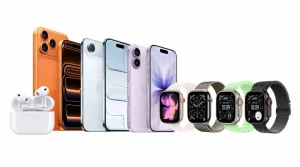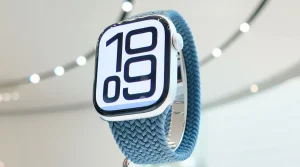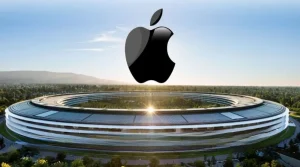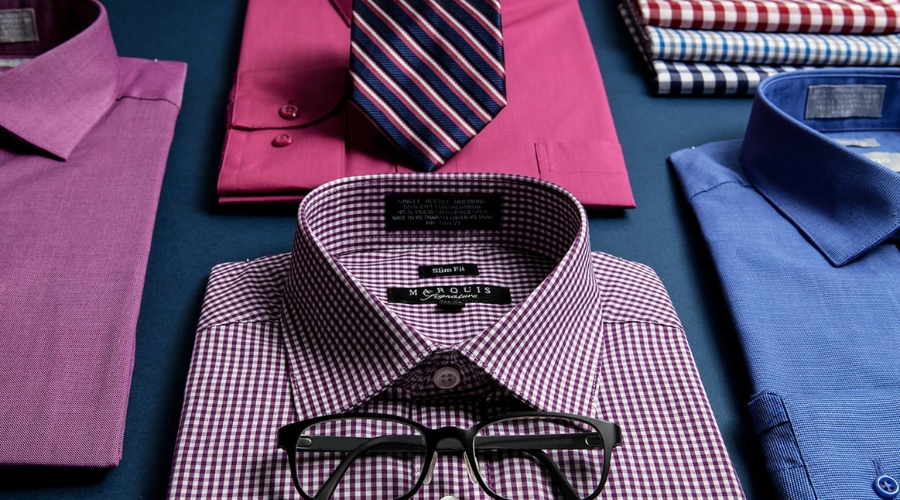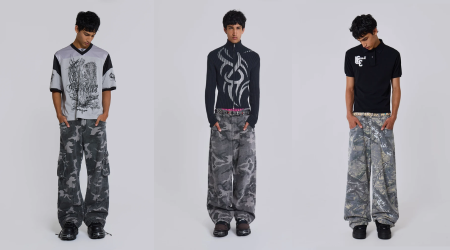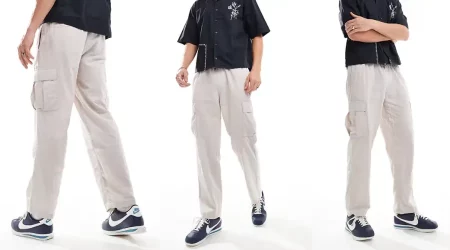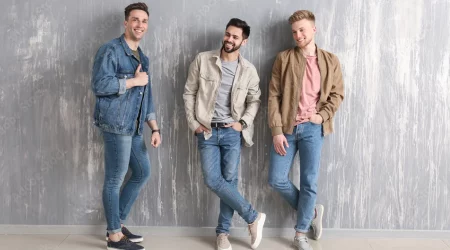Formal shirts are an important part of almost any man’s professional wardrobe. Whether you work in a corporate environment or are attending an important event, having the right formal shirt can make all the difference. In general, formal shirts come with long sleeves, high collars, and are made with finer fabrics such as cotton or silk. They tend to be solid colors — think blues, reds and blacks — instead of patterned like regular casual shirts. Formal shirts also have a more tailored fit and may have small details like double cuffs or pique stitching to set them apart from everyday dress shirts. Having the right formal shirt for the occasion will not only make you look your best but also help you feel confident and prepared. In this article, we’ll give you a variety of tips on how to buy a formal shirt and what styles are suitable for different types of events.
What’s the difference between a formal shirt and a dress shirt?
A formal shirt is a type of dress shirt. Formal shirts are generally made with finer fabrics such as silk or cotton, which makes them softer and smoother than most standard dress shirts. Gone are the days when a formal shirt and a dress shirt were basically the same thing. Back in the 1950s, dress shirts were generally made from cotton and patterned fabrics, whereas formal shirts were made from silk and had embroidery or pique stitching on the collar and cuffs. These days, there is much more variety in both formal and dress shirts. Most formal shirts will have long sleeves, higher collars, and a more tailored fit compared to regular dress shirts. Some formal shirts may have pleats at the back of the collar or cuffs with gussets to give the shirt a more fitted look.
Formal Shirts for Men
Traditional black is, of course, the best-known color for a formal shirt. But you don’t have to choose black if you want to wear a formal shirt. Any blue or purple shade, or even pink or orange, can be worn as formal dress shirts. Blue is the most traditional alternative to black, as it is a color that is often worn by politicians, lawyers, and business leaders. For this reason, it’s best to avoid wearing blue if you’re in retail sales or are otherwise not in a profession where you regularly interact with people in authority. Orange is also a good formal shirt color, but it’s best to avoid wearing it to professional events unless you work in a creative field where it’s acceptable to wear bright and bold colors.
Black Tie Events
Black tie events are typically black tie dress codes. You’ll often see men wear black tuxedos with a black bow tie and white formal shirt. A classic formal shirt design is the pleat-front, double-cuff shirt with a turndown collar, which has a sleek and slightly modern look. For a less contemporary look, you can also choose a cutaway collar, which has a button-down look and is a more classic formal shirt style.
Black-Tie Event Alternatives
Even though black tie is the most formal dress code, you can still stand out by choosing a colored shirt that’s not black. Orange and blue are the best color alternatives to black for a black tie event. Blue is a color that’s commonly found in more formal shirts, and so it’s a safe choice for a black tie event. Orange is a less common color for formal shirts, so it’s a bolder choice for an event. Orange isn’t recommended for black tie events if you work in a job where you regularly interact with people in authority. Otherwise, it’s a great color for a formal shirt at black tie events.
Semi-Formal Events
Semi-formal events are less formal than black tie events, but they are still dressy. You might wear a semi-formal shirt at a cocktail party, awards ceremony, or gala. Semi-formal dress codes are more relaxed than black ties, so you can choose a colored shirt instead of a white shirt. Blue and orange are the best color choices for a semi-formal shirt. Again, it’s important to consider the event’s theme when choosing a colored shirt, as you don’t want to be too flashy. If orange is part of the event’s theme, it’s a good semi-formal shirt color. Blue is another good semi-formal shirt color, but it also tends to be more commonly worn as a formal shirt. If you’re wearing a blue shirt to a semi-formal event, it’s best to avoid bolder shades of blue such as royal blue or cobalt blue, as these are more commonly worn as formal shirts.
Semi-Formal Alternative Events
For a less formal event than a semi-formal one, a patterned shirt can be a good choice. Patterned shirts work best when they have a subtle design, such as small checks or stripes. It’s also common to see bolder shirts worn at less formal events such as parties or happy hours. Bright colors and patterns are good choices for a less formal event. It’s important to make sure the shirt has an appropriate length and fit, so it doesn’t distract from the event or make you look unprofessional. A short-sleeved shirt or a shirt with large cuffs and a design that hangs loose on the body isn’t appropriate for a semi-formal event, but it can be fine for a less formal event.
Business Meetings & Interviews
If you’re meeting with a potential business partner or attending a job interview, you’ll want to dress in a semi-formal way. You can wear a patterned shirt, but it’s best to stay away from bolder colors like orange or blue. Instead, choose a shirt in a subtle color such as blue, green, or gray. Patterned shirts are fine, but they should be smaller patterns. Something with larger designs tends to be more formal. While some businesses may have a dress code that specifies a semi-formal dress code, many will be more open to a variety of shirts. It’s best to check with the company you are meeting with or interviewing with to see what they expect.
Business Meeting Alternatives
If you’re attending a more casual business meeting and don’t know what the expectations are, you can choose a less formal shirt that is still suitable for the occasion. Some more casual shirts have a subtle design that makes them less formal, such as a small stripe or pattern. Other shirts, such as polo shirts, look less formal because the fit is looser and the collar is lower than that of a dress shirt. It’s a good idea to avoid wearing a shirt that is too casual, such as a t-shirt, or a shirt that is too formal, such as a pleat-front shirt with a turndown collar. A shirt that is somewhere in the middle, such as a polo shirt with a button-down collar, is a good choice.
Conclusion
The secret to buying a formal shirt is to find one that is tailored, but not too tight. You want the shirt to fit you, but not be so tight that it feels uncomfortable or constricting. A formal shirt can be worn on its own or under a blazer or jacket, depending on the event. It’s a good idea to keep a variety of formal shirts in your wardrobe, so you can always have a shirt that is appropriate for an event.
